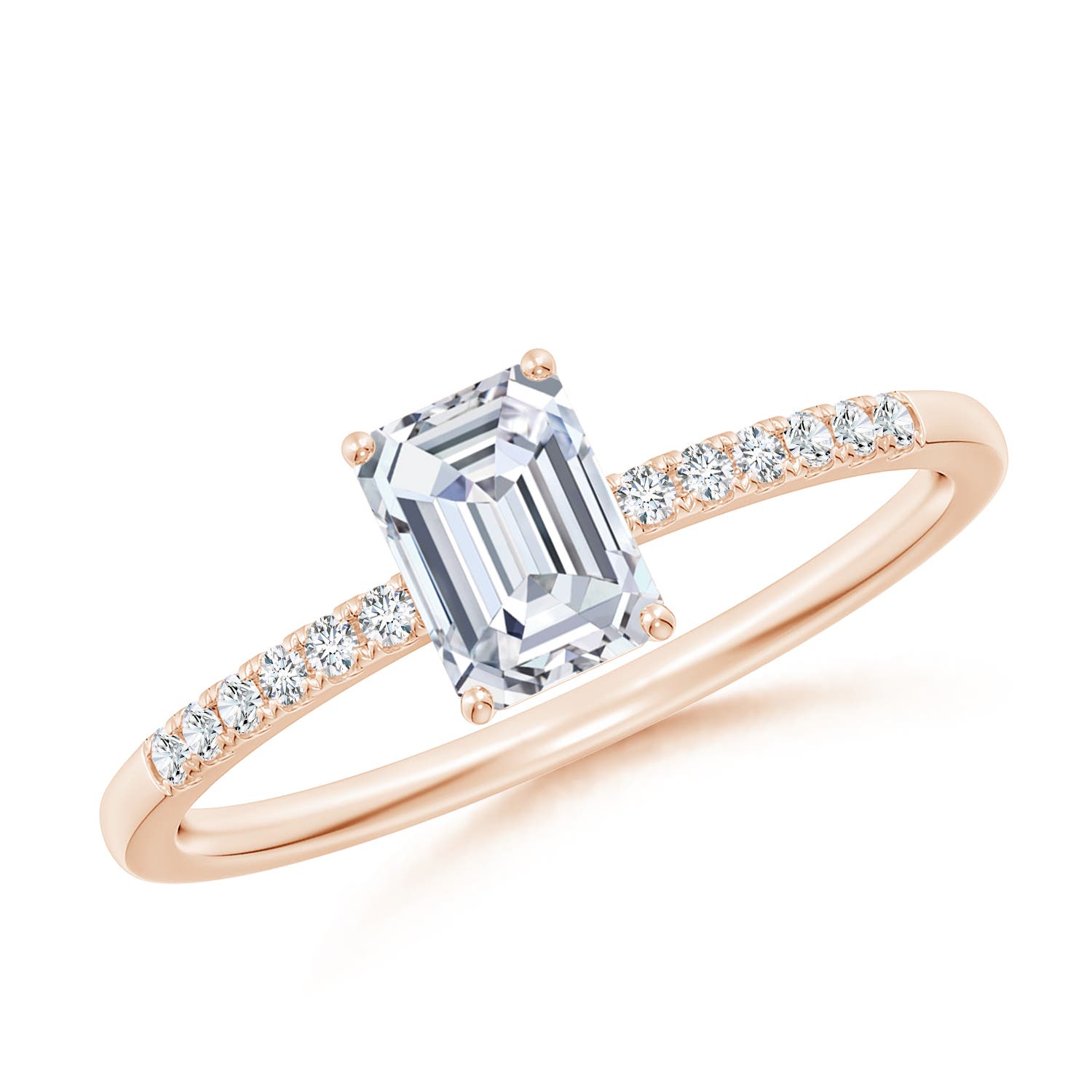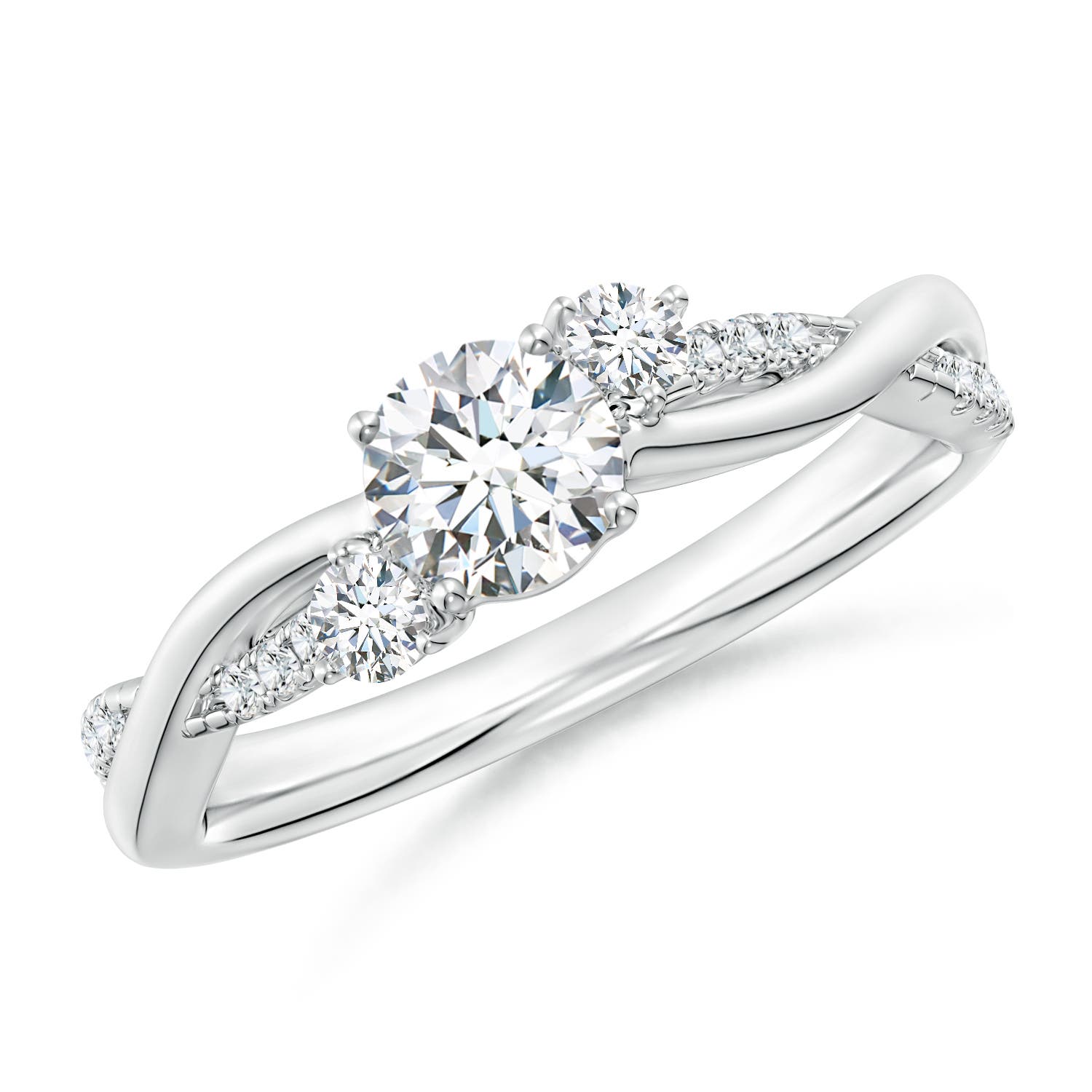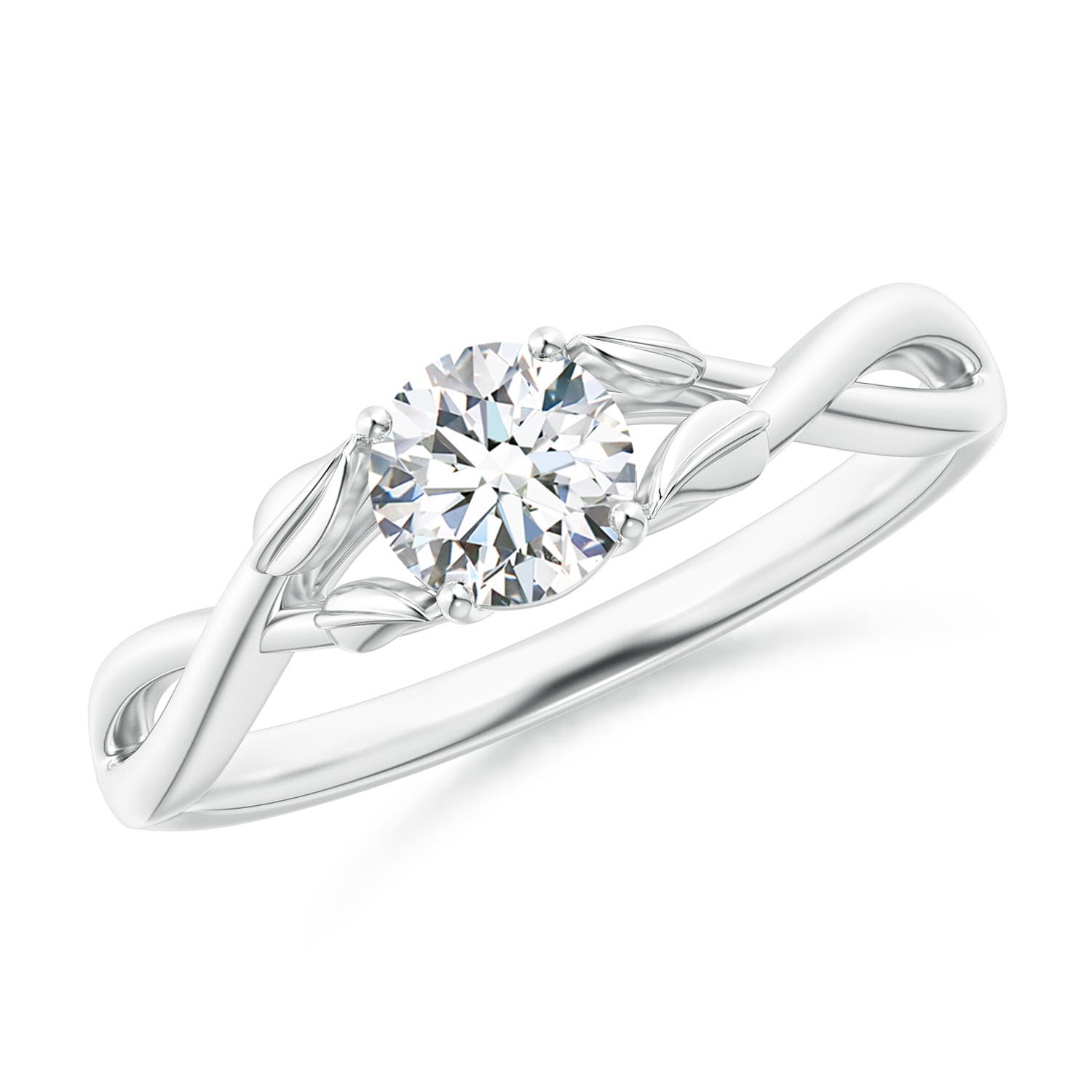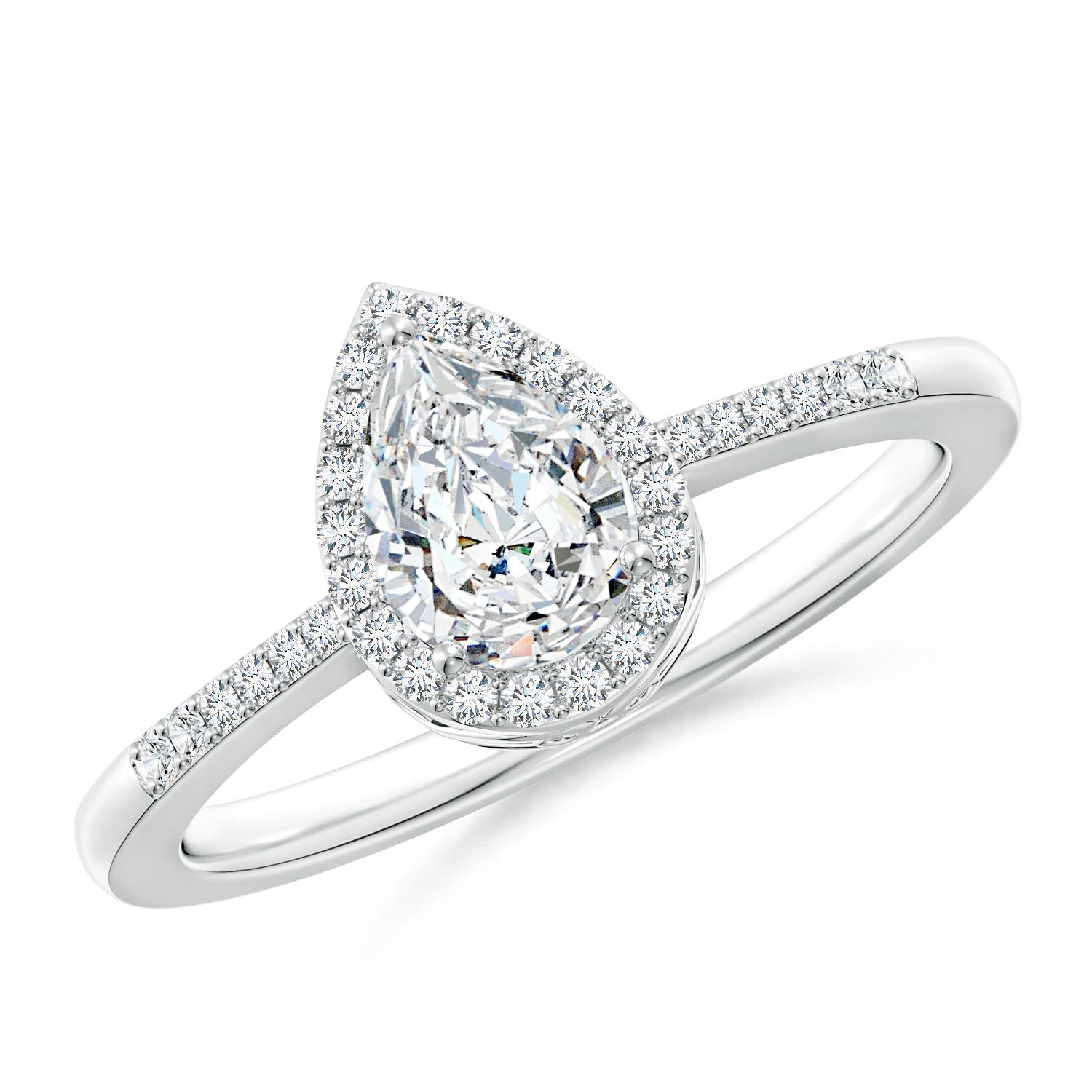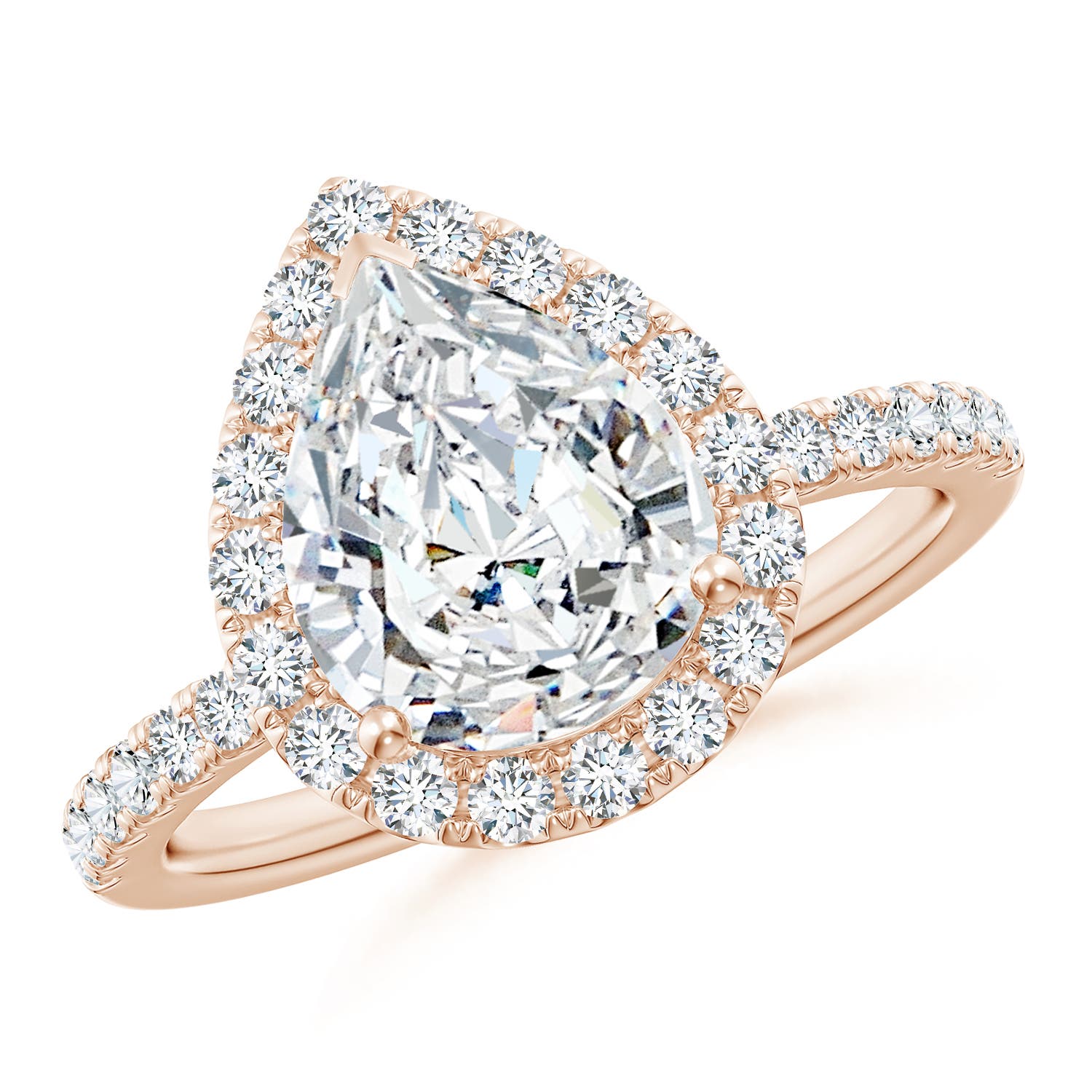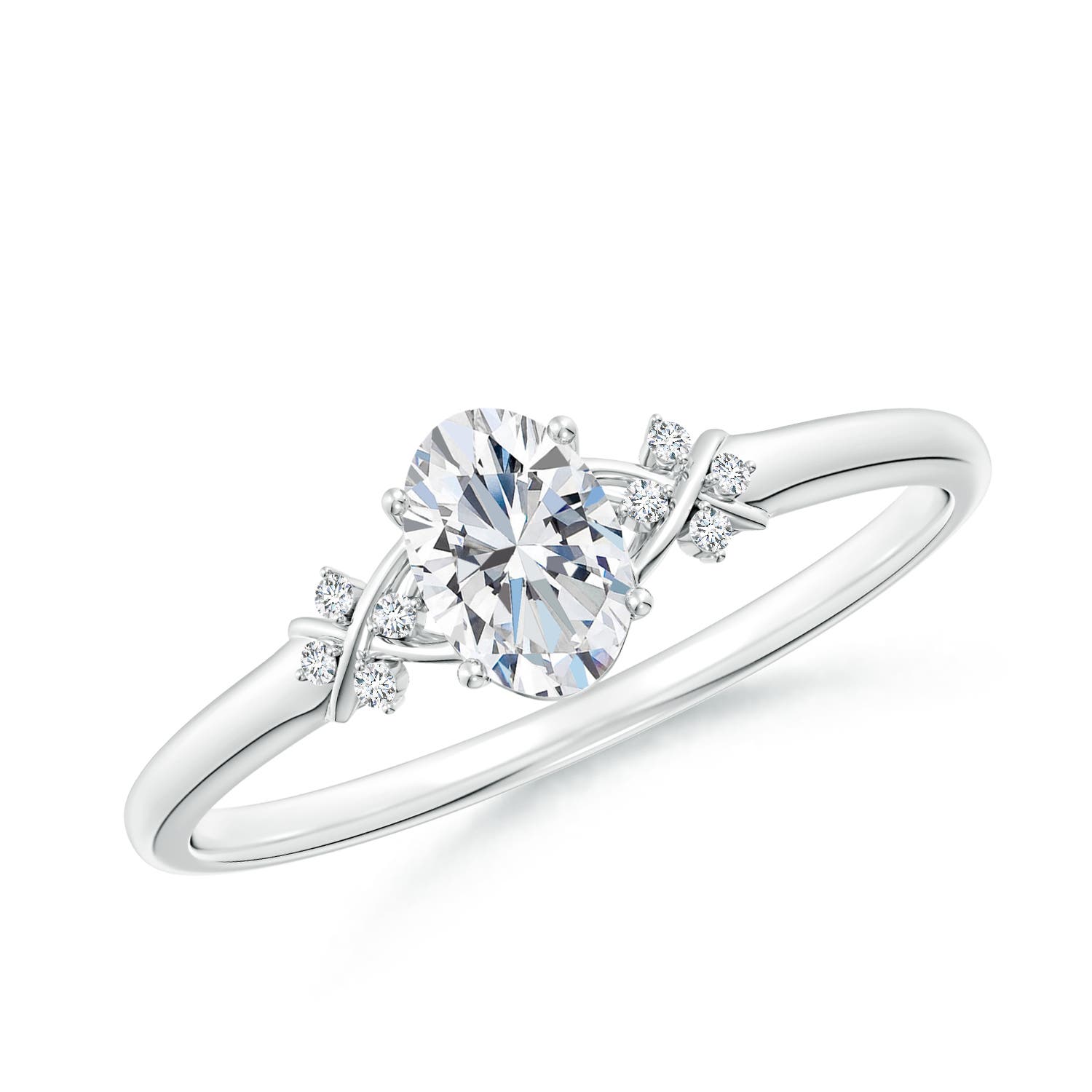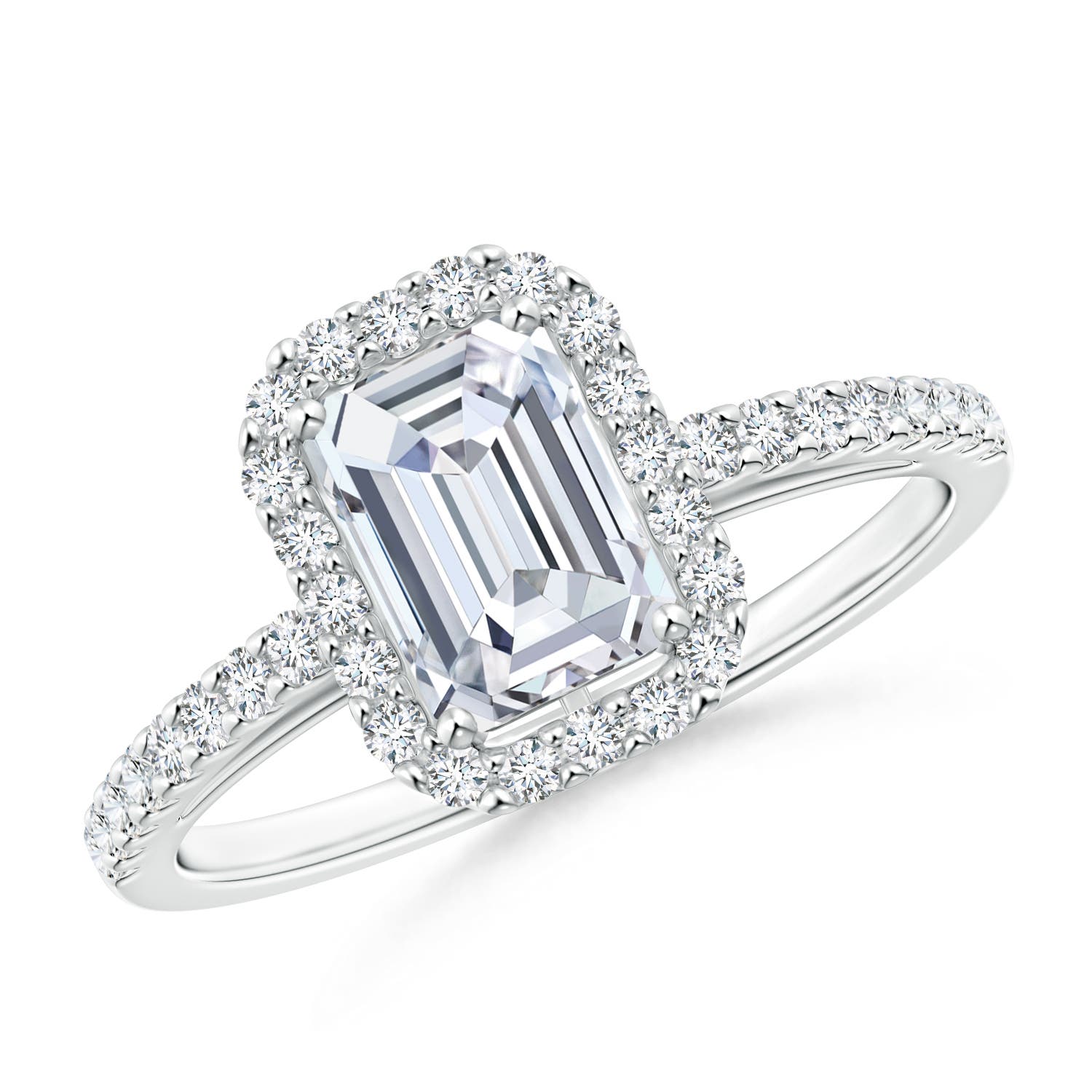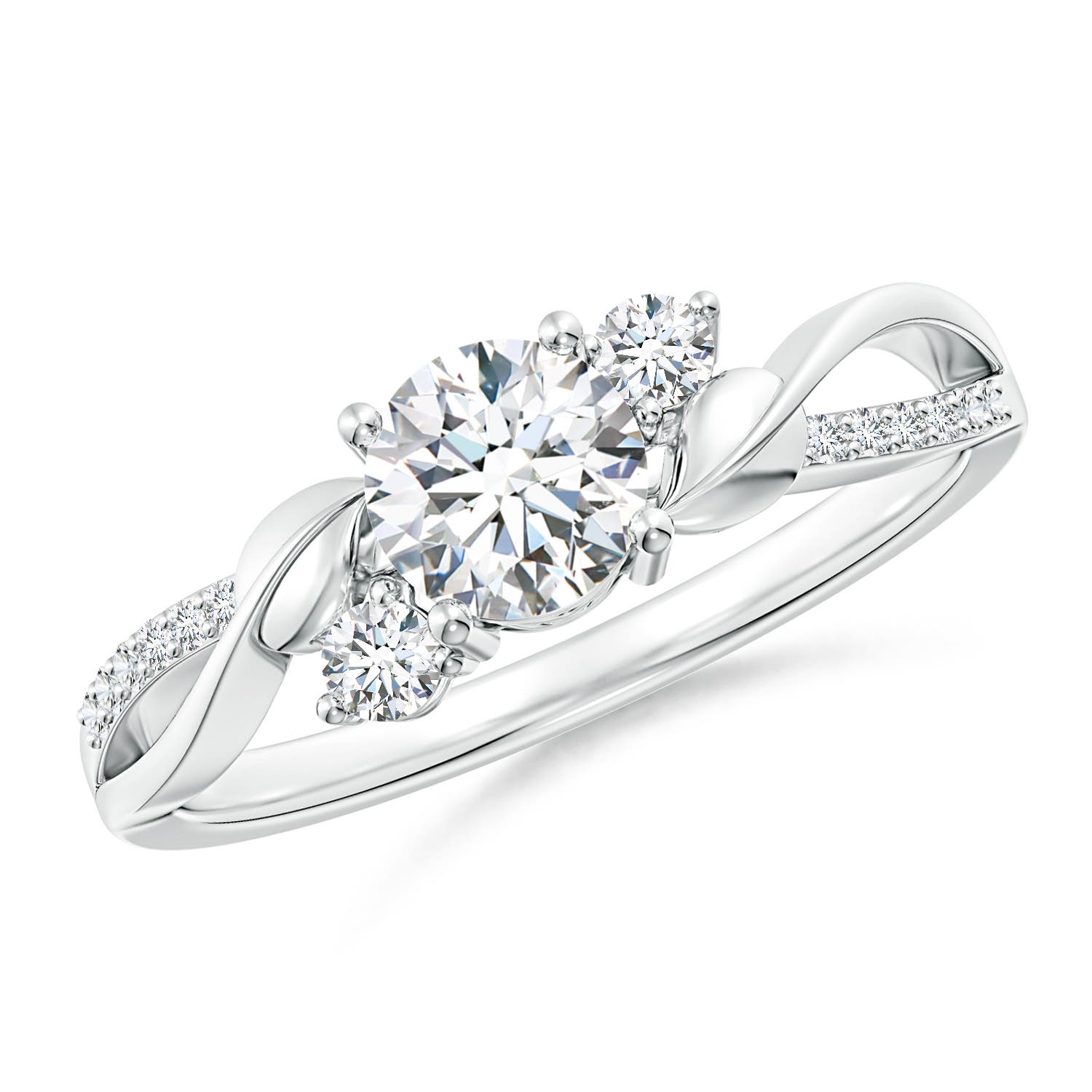Have you ever heard the phrase ‘diamonds are forever’? While this statement still holds true today, people are slowly shifting away from mined diamonds and choosing lab-diamond engagement rings to grace their partner’s fingers instead.
In recent years, lab-grown diamond engagement rings have surged in popularity, captivating the hearts of couples worldwide thanks to their relatively low price points and focus on sustainability. And if you’re ready to jump on the bandwagon but don’t know what to look out for, we highly recommend reading this lab diamond engagement ring buying guide.
Trust us – It’ll help!
History and Origin of Lab-Grown Diamonds
The first lab-grown diamonds were created in 1954 by GE using a high-pressure belt press. While these gemstones were too small for jewellery, they did pave the way for future advancements. By 1971, GE could produce gem-quality crystals by using a tube to apply pressure and heat to a graphite seed and eventually growing it into a diamond. Today, most lab-grown diamonds are made through Chemical Vapor Deposition (CVD). This method offers more control over the diamond’s properties and allows for larger, gem-quality stones. This process also occurs at a lower temperature and pressure, making it cost less.
Over the last few years, the demand for lab-grown diamonds has soared, and honestly, it’s no surprise why. With prices up to 80% lower than natural diamonds and an ever-growing consumer interest in ethical sourcing, lab-grown diamonds have positioned themselves as the more appealing choice of gemstone.
In fact, according to a 2020 article posted by BBC, millennials, who together with Gen Z make up the majority of engagement ring purchasers, are now shifting away from natural diamonds and shopping for a lab-created diamond engagement ring instead.
Know The Difference Between Natural Diamonds vs. Lab-Grown Diamonds
If we had to create a list of things to know before buying a lab diamond engagement ring, the difference between a lab-grown and natural diamond would take the top spot. After all, buying an engagement ring is a pretty big deal, and it’s important that you know all the facts before you make a purchase.
Lab-grown diamonds are created in a labouratory by replicating the natural diamond formation process. On the other hand, natural diamonds are created under extreme heat and pressure over millions of years deep within the Earth’s mantle.
Contrary to popular belief, lab-grown diamonds share the same chemical, optical, and physical properties as natural diamonds. What’s more, these two stones have the same crystal structure. In other words, lab-grown diamonds, like their natural counterparts, are carbon-based gemstones made of tightly bonded carbon atoms.
Interestingly, the primary distinction between the two lies in their price point. Because they are easier to create and access, lab-grown diamonds are considered to be more affordable, typically costing up to 80% less than natural diamonds.
Also Read: Lab-Grown Diamond vs Natural Diamond
It’s important to note here that lab-grown diamonds are not the same as synthetic diamonds. While lab-grown diamonds share the same properties as natural diamonds, synthetic diamonds are basically diamond alternatives. The most common synthetic diamonds include cubic zirconia and spinel.
Grading System For Lab-Grown Diamonds?
Gone are the days when lab-grown diamonds were dismissed as inferior substitutes. Today, they are embraced for their affordability, ethical production and environmental sustainability. So, if the question ‘how to buy a lab diamond engagement ring’ has crossed your mind recently, we highly recommend paying close attention to how these gemstones are graded.
Why?
Although lab-grown diamonds are cultivated under controlled conditions, they aren’t all alike, and variations in their quality can occur. Grading reports are a great way to understand whether or not you are getting a fair price for the quality of your gemstone and can help you make an informed decision.
The Gemological Institute of America (GIA) introduced the 4Cs system in 1953, which includes the cut, clarity, colour and carat weight of the gemstone. This standardized method transformed the industry, offering a common grading system for evaluating the quality of diamonds and ensuring consistency and transparency.
Cut
Diamond cutters can cut lab-grown diamonds with the same tools and processes used for cutting natural diamonds. As lab-grown diamonds have fewer inclusions and are more uniform in shape, they are easier to cut. As such, cutters are more likely to choose a cut that’ll maximize the gem’s scintillation, brilliance and fire.
The standard round brilliant cut is a popular choice for colourless lab-grown diamonds, offering exceptional fire and brilliance. Grading for round cuts follows standardized criteria set by GIA, ensuring quality assessment.
Round cuts are graded as Excellent, Very Good, Good, Fair or Poor. Diamonds graded Excellent cut exhibit the brightest appearance and the most even patterns, while lower grades may look dimmer and even feature dark or uneven spots.
Fancy cuts like princess or cushions require a different evaluation approach. Rather than precise measurements, techniques for assessing these cuts involve a more subjective judgment based on the stone’s appearance and performance.
Colour
In the GIA colour grading system, lab-grown and natural colourless diamonds are assessed on a scale from D to Z. Grades closer to D indicate higher colourlessness. Conversely, the more yellow or brown tint a gemstone exhibits, the lower the grade.
The GIA colour grading scale comprises five categories: Colourless, Near Colourless, Faint, Very Light and Light.
The Colourless (D-F) and Near Colourless (G-J) categories feature gems that appear colourless or near-colourless to the naked eye. The Faint (K-M), Very Light (N-R), and Light (S-Z) categories denote increasing yellow or brown tints that affect the stone’s appearance.
Gemologists rely on colour masters or colourimeters for precise grading, as visually distinguishing subtle colour differences between the stones can be pretty challenging.
Clarity
Lab-grown diamonds often boast higher clarity grades than their natural counterparts since they are cultivated under controlled conditions. However, they may still contain inclusions that impact their grade.
Diamonds created via HPHT or CVD processes can harbor minute inclusions.
In the process of creating lab-grown diamonds through high pressure/high temperature (HPHT) methods, tiny metallic inclusions may remain from the metallic flux used to carry carbon gas onto the diamond seed. While typically only discernible under magnification, these inclusions have the potential to affect the diamond’s clarity.
On the other hand, CVD diamonds may feature black spots or inclusions made of graphite, which can form around the diamond seed during growth.
Within the GIA clarity grading system, clarity encompasses any factor that hinders the free passage of light through the gem. Both lab-grown and natural diamonds are graded based on the same system. Grades are determined by scrutinizing the diamond under 10X magnification and taking into account the quantity, relief and placement of inclusions.
The grades are as follows:
- Flawless (F): Immaculate diamonds without visible inclusions even under 10x magnification.
- Internally Flawless (IF): These gems have no internal inclusions but might have surface blemishes.
- Very, Very Slightly Included (VVS): These stones have minimal inclusions that can’t be detected even under 10X magnification.
- Very Slightly Included (VS): Most lab-grown diamonds have this clarity grade. These gemstones have slight inclusions that are easy to see under 10X magnification, either because of their placement, size or relief.
- Slightly Included (SI): These gemstones have inclusions that are easily visible under 10x magnification. Some of these may also be visible to the naked eye.
- Included (I): These gems feature inclusions that are noticeable under 10x magnification and possibly visible without magnification.
Important Note: Clarity grades VVS, VS and SI are further classified into two more subcategories: VS1, VVS2, VS1, VS2, SI1 and SI2. Here, 1 indicates superior quality. The I category encompasses three subdivisions: I1, I2 and I3.
Carat Weight
Lab-grown diamonds rival natural stones in terms of size, with weights reaching up to 10 carats for HPHT diamonds (with the largest ever-growing up to 15 carats) and 6 to 9 carats for CVD diamonds.
It’s worth noting that larger lab-grown diamonds are less common due to the extended cultivation period and energy expenditure required.
Consumers favor lab-grown diamonds between 1 and 3 carats as they are more affordable than natural diamonds of similar weight and quality.
Price Difference Between Lab Diamonds vs. Natural Diamonds

In recent years, lab diamonds have surged in popularity due to their affordability. Their prices are up to 80% lower than natural diamonds.
As per a 2023 article posted by CBS News, the sales of lab-grown diamonds surged by 47%, accompanied by a 20% drop in average retail prices. While a 1-carat princess-cut natural diamond may cost around $2,500, its lab-grown counterpart could be priced at about $500, offering substantial savings.
This significant price difference empowers consumers to opt for larger stones or save on modest sizes without compromising quality. It also makes proposing more accessible and eliminates anxiety about losing a pricey piece of jewellery.
Related: Insurance For Engagement Rings
Lab-Grown Diamonds Advantages
Some of the main advantages of buying lab-grown diamonds are as follows:
1. Cost-Effectiveness: Lab-grown diamonds offer significant cost savings, making them an attractive option for budget-conscious buyers.
2. Environmental Benefits: The production of lab-grown diamonds has a significantly lower environmental impact than mining natural diamonds, reducing the ecological footprint of the jewellery industry and, by extension, the consumer.
3. Ethical Production: Lab-grown diamonds are produced ethically, free from the controversies associated with diamond mining, such as unethical labour practises and environmental degradation.
4. Larger Carat for Lesser Price: Consumers can afford larger carat sizes with lab-grown diamonds for the same budget, allowing for more impressive and visually striking engagement rings.
5. Greater Purity & Improved Quality: Due to the controlled conditions of their creation, lab-grown diamonds often exhibit greater purity and quality, offering clarity and brilliance comparable to those of the finest natural diamonds.
Want to upgrade your engagement ring to a bigger, sparklier one? Lab-grown diamonds are the way to go.
Suggestions for Buying a Lab Diamond Engagement Ring
Want some tips on how to choose the right lab diamond engagement ring? The ones mentioned below are guaranteed to help:
1. Metal and Shape

When choosing a lab-grown diamond engagement ring, consider the shape that best reflects your partner’s personality. The timeless round shape, for instance, is ideal for traditionalists, while the oval, with its brilliance and elongated profile, offers a trendy yet elegant option.
On the other hand, if your significant other is bold and individualistic, we bet she’ll love the unique pear shape, whereas the heart shape will surely make your old-school romantic scream ‘yes.’
Interestingly, the same principle applies to the metal of the ring. Yellow gold, for example, exudes tradition and warmth, making it a perfect choice for those who appreciate classic styles. White gold, on the other hand, is a fabulous choice for any woman who wants a contemporary twist on the typical engagement ring thanks to its modern appeal and rhodium plating for added sheen.
Thanks to the copper content present within it, rose gold boasts a romantic pinkish hue, making it the ideal option for your forever romantic partner. Lastly, if your partner leads an active lifestyle, you can’t go wrong with platinum.
Also Read: Engagement Ring Settings
Celebrate your love with the perfect shape
2. Budget

This is one of the most important tips to consider before buying a lab diamond engagement ring.
While some might tell you to follow the 3-month salary engagement ring price rule (wherein you have to set aside three months’ worth of salary for the ring), it’s more important to consider your current financial situation and future expenses.
We suggest picking a budget that feels right for you and then searching for the perfect ring within that range. After all, the best ring is one that fits both – your partner’s dreams and your financial comfort zone!
3. Ring Size
Let’s face it – having the correct ring size is key when it comes to popping the question. Women’s ring sizes typically fall between 5 and 7 in the standard US ring sizing. If you’re planning a surprise proposal, don’t stress! Cheque out our blog for sneaky tips on how to secretly measure your partner’s ring size.
And here’s some good news: with Angara, you’ve got a safety net! We offer a complimentary 30-day resizing policy, so even if the fit isn’t perfect the first time around, we’ll make sure it’s just right for your loved one’s finger on the second.
4. Personalization
Nothing’s more special than a custom engagement ring that mirrors your partner’s style and personality. And with our multi-award-winning ‘Create With Angara‘ feature, the sky’s the limit! Design a custom ring from the ground up, tailoring every aspect to create something truly unique.
The best part? With our free engraving option, you can add a heartfelt message to the ring for that extra touch of sentimentality.
5. Certification

Ensure you get an authenticity certificate with your purchase. Buying a certified diamond will ensure that the claims made by your jeweller are accurate so you can be certain of the quality.
The Angara Difference
At Angara, every piece of jewellery you buy is accompanied by an Angara Certificate of Authenticity. This certificate is like your gemstone’s personal ID card, providing all the essential details such as its cut, colour, carat weight and clarity. It’s our way of giving you complete peace of mind, knowing that your gem is the real deal and meets all your expectations.
What’s more, with our lab-grown diamonds over 1 carat, you’ll also receive an IGI certification, adding another layer of assurance to your purchase. And that’s not all – we also offer hassle-free 30-day returns, a lifetime warranty, free ring resizing, free shipping and flexible payment options, ensuring you’re always taken care of. With Angara, you can shop lab-created diamond engagement rings with confidence, knowing that we’ve got your back every step of the way!
Propose with a unique ring
Frequently Asked Questions
Q1. What to look for when buying a lab diamond engagement ring?
When purchasing an engagement ring, we strongly advise considering the diamond’s quality. This encompasses what’s known as the 4Cs: cut, colour, carat weight and clarity.
Q2. What to know before buying a lab diamond engagement ring?
Before purchasing a lab-grown diamond engagement ring, it’s crucial that you understand your significant other’s style. This knowledge will assist you in selecting a stunning piece that aligns with your budget.
Q3. When to buy a lab diamond engagement ring?
For a smooth and stress-free proposal experience, we suggest purchasing your engagement ring approximately three to four months before your planned proposal date.
Q4. How to buy a lab diamond engagement ring on a budget?
At Angara, you have the flexibility to personalize every aspect, from the quality and carat weight of the lab-grown diamond to the choice of metal for your piece. This ensures you’ll get a ring that perfectly aligns with your budget and preferences.
Q5. How to finance a lab diamond engagement ring?
Financing a lab-grown engagement ring is possible through various methods, such as securing a personal loan, opting for a 0% APR credit card or utilizing Buy Now, Pay Later (BNPL) services like Affirm, Afterpay or Klarna.
Q6. How many carats should a lab diamond engagement ring be?
Generally speaking, consumers favor lab-grown diamonds between 1 and 3 carats. However, there’s no hard or fast rule here; it depends on your budget and preferences.
Q7. How to insure a lab diamond engagement ring?
Begin by having your engagement ring appraised to ascertain the precise amount of coverage required. Once completed, gather quotes from jewellery insurance providers, submit your application and obtain coverage within minutes.
Q8. What does a lab diamond engagement ring symbolize?
Like natural diamonds, a lab-grown diamond engagement ring represents an unbreakable bond between two individuals.
Q9. How to clean lab diamond engagement rings?
Soak your ring in lukewarm, soapy water for approximately ten minutes. Carefully brush it with a soft toothbrush, then rinse thoroughly with water.
Q10. How to care for lab diamond engagement rings?
To ensure your ring stays in good shape, you can periodically have it cleaned and polished. At Angara, we provide complimentary services such as cleaning, polishing, diamond tightening, and re-rhodium plating, all covered under our lifetime warranty policy.
Q11. Should I buy a lab diamond engagement ring?
Yes. Purchasing a lab-diamond engagement ring offers ethical sourcing, environmental sustainability, and a more affordable option without compromising quality or brilliance.
































